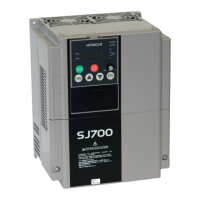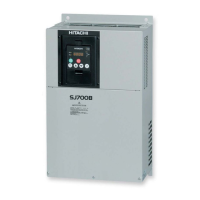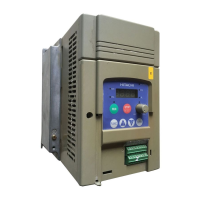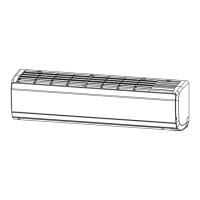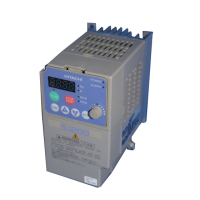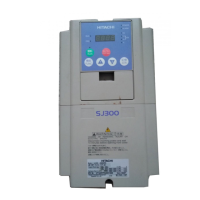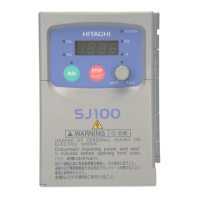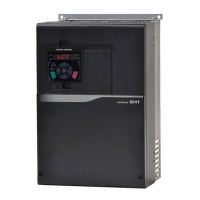Chapter 4 Explanation of Functions
4-98
4.3.4 Torque biasing function
The torque biasing function allows you to make the inverter bias the
torque command generated during the operation in speed control mode.
You can effectively use this function for inverter applications to a lift or
other elevating machines.
Torque biasing mode
selection
Bias setting from the digital operator
Bias setting via the O2 terminal (*1)
-200 to +200 (%)
<-180 to +180>(*3)
Torque biasing polarity
selection (*2)
Depending on the sign of bias value
Depending on the motor rotation direction
*1 When the torque bias is set as a signal input via the O2 terminal, the inverter recognizes the signal voltage -10 to
+10 (V) as the bias value -200 to +200 (%).
*2 1) When "00" (depending on the sign of the bias value) is specified:
Regardless of the direction of motor rotation, torque in the forward direction increases when the torque bias
signal indicates a positive (+) value. Torque in the reverse direction increases when the torque bias signal
indicates a negative (-) value.
2) When "01" (depending on the motor rotation direction) is specified:
The sign of the bias value indicated by the torque bias signal and the direction of the torque biasing change
according to the rotation direction specified by the operation command.
With a forward operation command: the torque is generated in the same direction as that specified by the
sign of the torque bias value.
With a reverse operation command: the torque is generated in the opposite direction to that specified by the
sign of the torque bias value.
*3 <>:applied for 75 to 150kW
4.3.5 Torque control function
The torque control function is effective in the V2 control mode.
You can use the inverter not only under the speed control or pulse
train position control but also with this torque control function. You
can use this function effectively for inverter applications to, for
example, a winding machine.
To operate the inverter to drive the motor under torque control,
assign function "52" (ATR) to an intelligent input terminal. The torque
command input is enabled when the ATR terminal is on.
You can select one of four torque command input methods (digital
operator and three analog input terminals) by the torque command
input selection (P034).
Torque command input selection
Input from the O terminal
Input from the OI terminal
Input from the O2 terminal
Input from the digital operator
0 to 200 (%)
<0 to 180(%)>
Torque setting for the input from the digital
operator (P033 = 03)
Polarity selection at the torque
command input via the O2
terminal
Depending on the sign of torque value
Depending on the motor rotation direction
Speed limit for torque-controlled
operation (forward rotation)
0.00 to 99.99 or 100.0 to
400.0 (Hz)
Speed limit for torque-controlled
operation (reverse rotation)
0.00 to 99.99 or 100.0 to
400.0 (Hz)
Torque biasing mode selection
Bias setting from the digital operator
Bias setting via the O2 terminal
-200 to +200 <-180 to 180>(%)
Torque biasing polarity selection
Depending on the sign of bias value
Depending on the motor rotation direction
ATR: Permission for torque command input
*1 <>:applied for 75 to 150kW
P036: Torque biasing mode selection
P037: Torque bias setting
P038: Torque biasing polarity selection
d010: Torque bias monitoring
P033: Torque command input selection
P034: Torque command setting
P035: Polarity selection at the torque command
input via the O2 terminal
P039: Speed limit for torque-controlled operation
(forward rotation)
P040: Speed limit for torque-controlled operation
(reverse rotation)
d009/d010/d012: Torque command monitoring
P036: Torque biasing mode selection
P037: Torque bias setting
P038: Torque biasing polarity selection
d010: Torque bias monitoring
C001 to C008: Terminal [1] to [8] functions
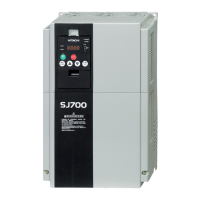
